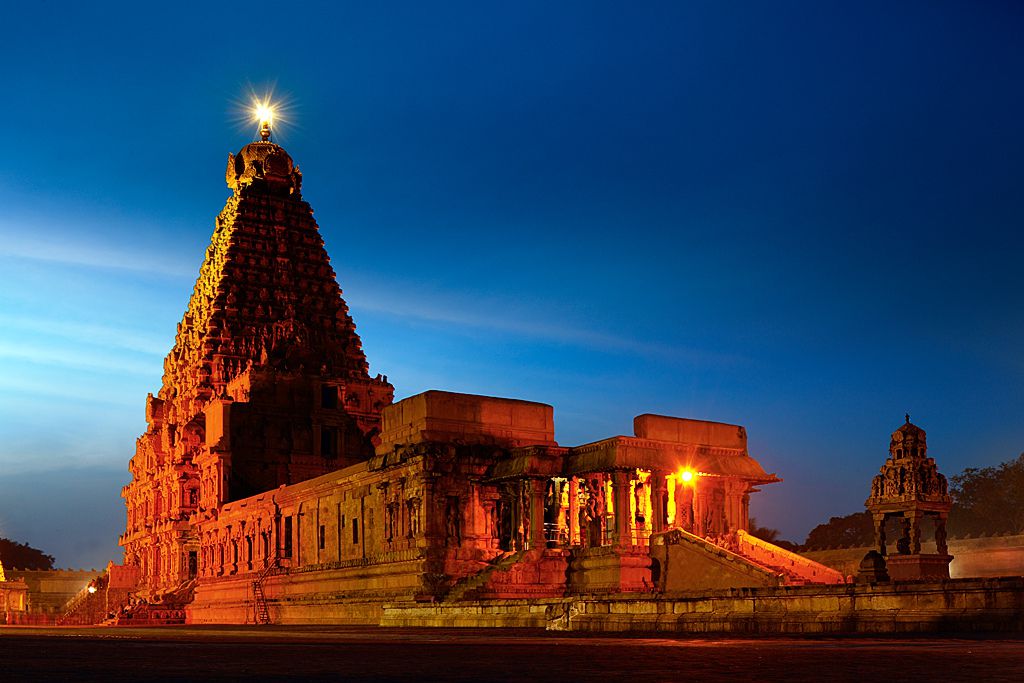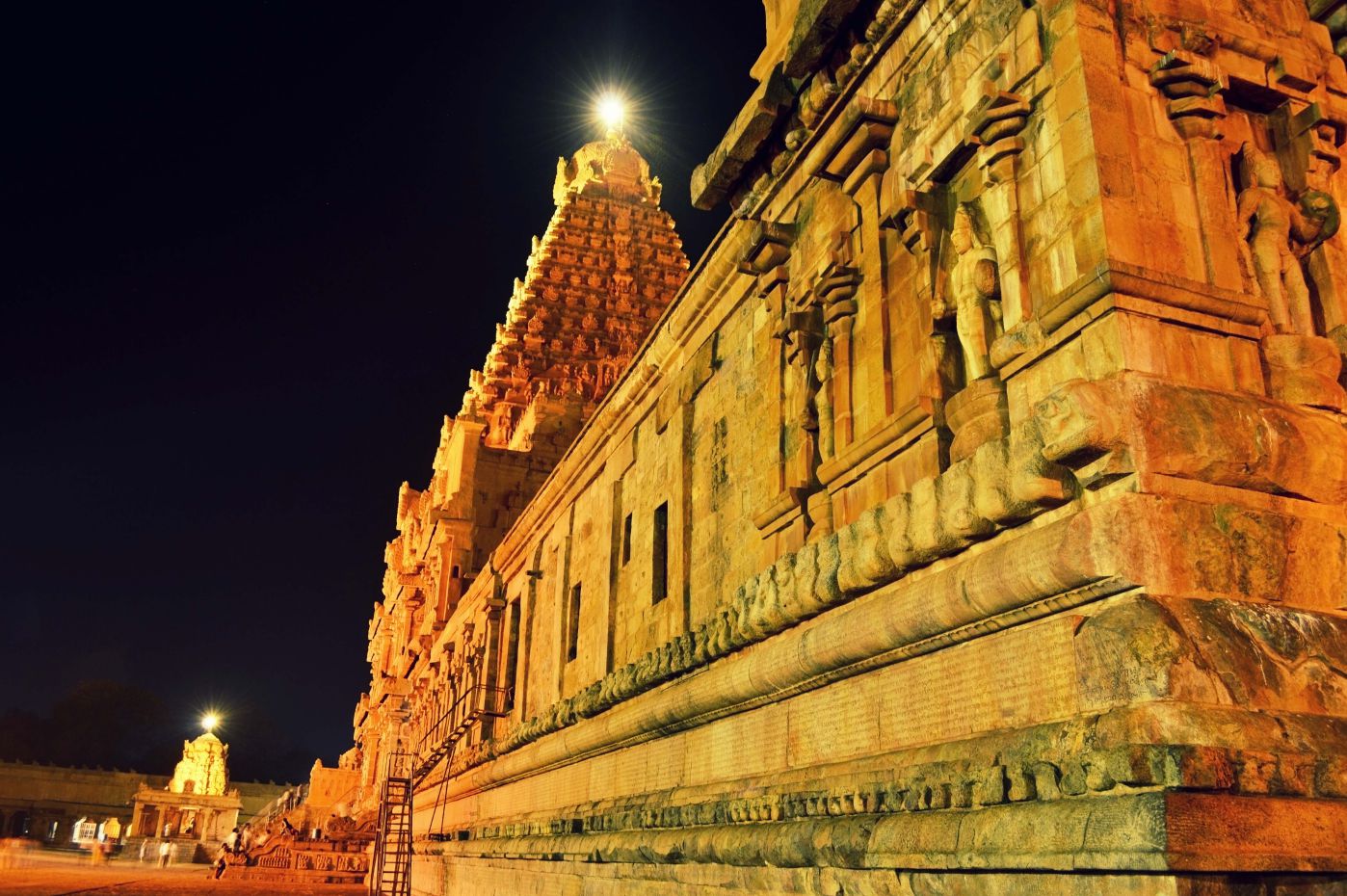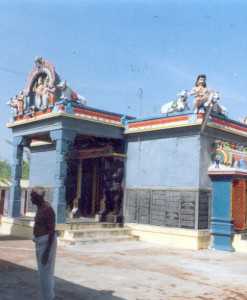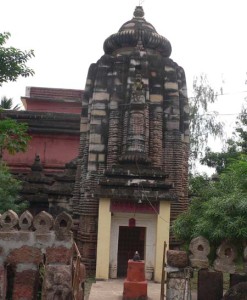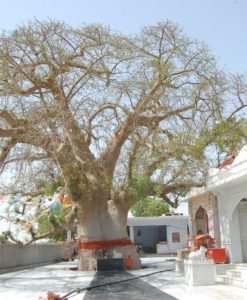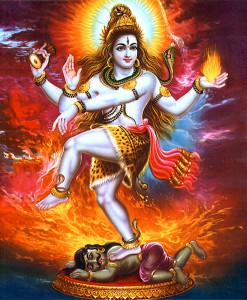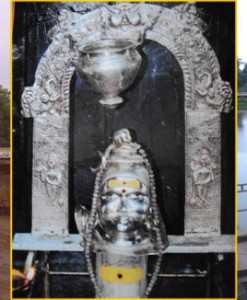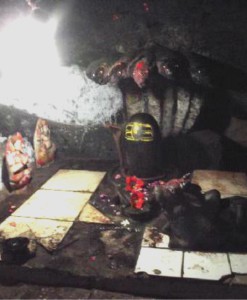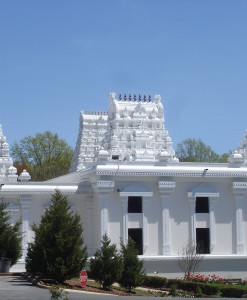No products in the cart.
Peruvudaiyar Kovil, which is also famous as Brihadeeswarar Temple, Rajarajeswaram and Raja Rajeshwara Temple, is located in Thanjavur, Tamil Nadu. This Hindu temple is dedicated to Lord Shiva. It is one luminous example of the major heights, Cholas achieved within Tamil architecture. This temple is a tribute and a reflection of the power of the Chola King, Raja Raja Chola I. This temple remains as one of India’s largest and Indian architecture’s greatest glories. It is also a part of UNESCO World Heritage Site as “Great Living Chola Temples”.
This great temple is India’s one of the most prized site for its architecture. It stands in the middle of fortified walls added probably in sixteenth century. The temple tower, which people call as Vimana, is 216 feet or 66 meters high. It is also one among the tallest tower in the whole world of its kind. Kumbam, Chikharam or Kalasha, which is bulbous, or apex structure on top of the temple, people believe that it is made out of a single stone carving.
There is one statue of a sacred bull or Nandi at the entrance of this temple measuring about thirteen feet high and sixteen feet long. It is the result of a single rock carving. Entire structure of the Brihadeeswarar temple is made of granite, whose nearest source is near Tiruchchirapalli, which is nearly 60 kms to Thanjavur’s west, where temple is.
Built by Raja Raja Chola I in 1010 AD in Thanjavur, Brihadeeswarar Temple is also popular by name of ‘Big Temple’ and it turned 1000 years in 2010.
Brihadeeswarar Temple
- Temple History
- Architecture
- How To Reach The Temple
- Daily Poojas And Festivals
- Videos
- Additional Information
Arulmozhivarman, a Tamil emperor who was popular as Rajaraja Chola I laid out the foundations of Brihadeeswarar Temple during 1002 CE. It was first among other great building projects by Tamil Chola. Main purpose of building this temple was to grace throne of Chola Empire with compliance of one command Rajaraja Chola I receive in a dream. Grandeur and scale is in Chola tradition. A symmetrical and axial geometry rules layout of this temple. Temples from same period and two following centuries are expressions of Tamils Chola power, artistic expertise and wealth. Emergence of these types of features, such as multifaceted columns along with projecting signals of square capitals signifies arrival of Chola style, which was new at that time. Brihadeeswarar Temple’s build was like one royal temple for displaying emperor’s vision for relationship and power to universal order.
This temple was one site of primary royal ceremonies, such as anointing emperor and to link emperor with Shiva, its deity and deity’s daily rituals was a mirror of those by king. It is one architectural exemplar, which showcases true form of Dravida kind of architecture in temples and is a representative of ideology of Chola Empire and Southern India’s Tamil civilization. Brihadeeswarar Temple “testifies to Chola’s brilliant achievements in architecture, painting, bronze casting and sculpture.”
A wish for establishing such a huge temple as per saying of people occurred to then king Raja Raja, who was staying as one emperor in Sri Lanka. Brihadeeswarar Temple is first among all buildings, which make use of granite fully and it finished within five years from 1004 AD to 1009 AD.
A first rectangular surrounding wall, 270 m by 140 m, marks the outer boundary. The main temple is in the center of the spacious quadrangle composed of a sanctuary, a Nandi, a pillared hall and an assembly hall (mandapas), and many sub-shrines. The most important part of the temple is the inner mandapa which is surrounded by massive walls that are divided into levels by sharply cut sculptures and pilasters providing deep bays and recesses. Each side of the sanctuary has a bay emphasising the principle cult icons. The karuvarai, a Tamil word meaning the interior of the sanctum sanctorum, is the inner most sanctum and focus of the temple where an image of the primary deity, Shiva, resides. Inside is a huge stone linga. The word Karuvarai means “womb chamber” from Tamil word karu for foetus. Only priests are allowed to enter this inner-most chamber.
In the Dravida style, the Karuvarai takes the form of a miniature vimana with other features exclusive to southern Indian temple architecture such as the inner wall together with the outer wall creating a pradakshina around the garbhagriha forcircumambulation (pradakshina). The entrance is highly decorated. The inside chamber housing the image of the god is thesanctum sanctorum, the garbhagriha. The garbhagriha is square and sits on a plinth, its location calculated to be a point of total equilibrium and harmony as it is representative of a microcosm of the universe. In the center is placed the image of the deity. The royal bathing-hall where Rajaraja the great gave gifts is to the east of the hall of Irumudi-Soran.
The inner mandapa leads out to a rectangular mandapa and then to a twenty-columned porch with three staircases leading down. Sharing the same stone plinth is a small open mandapa dedicated to Nandi, Shiva’s sacred bull mount.
If you want to reach this city of Thanjavur through Airways, then it is possible as nearest airport from Thanjavur is located at Trichy, which is 65 kilometers away.
One of most convenient and affordable means to reach Thanjavur is through Railways. As this city has its own railway station, connected well with Chennai, Madurai and Trichy.
City of Thanjavur connects through Roadways with all major cities and towns in state of Tamil Nadu along with Ernakulam, Kochi and Thiruvananthapuram cities in state of Kerala and Bangalore city in Karnataka.
The temple is open from 6am to 8.30pm. The premises witness a lot of devotees who start waiting from as early as 5am. Purchasing a special darshan ticket for Rs 5/- during Sundays, when the temple is extremely crowded, speeds up the darshan time.
People treat Day of Ruling star or satabhishag as one festival day in every month during a year, as it symbolizes a ruling star when Raja Raja was born.
In month of May or Visaka according to English calendar, an annual festival took place for nine days. Devotees bath their deity with Champaka flower fragrance soaked water.
Thanjavur experiences both pleasant and hot climates.
Here summers occur from month of March to month of May. During this period climate remains hot with temperature meandering in band of 25 to 40 degree Celsius. Hence, tourists prefer avoiding hot days occurring in months of April, then May.
This city experiences Monsoon season during month of June till September. Later low rains accompany this period. This place is gorgeous in rains, offering some relief out of hot climate.
Winter season remains in this city from month of December up to February. At this time, climate remains pleasant and temperature moderate between ranges of 20 to 30 degree Celsius.
Best season for you to visit this beautiful city of Thanjavur is from October till March.
From June till September, climate remains humid but it is pleasant due to moderate temperature. It is suitable for you to take short trips along with sightseeing.
Time between October and March is perfect and ideal for visits by tourists and to temples.

